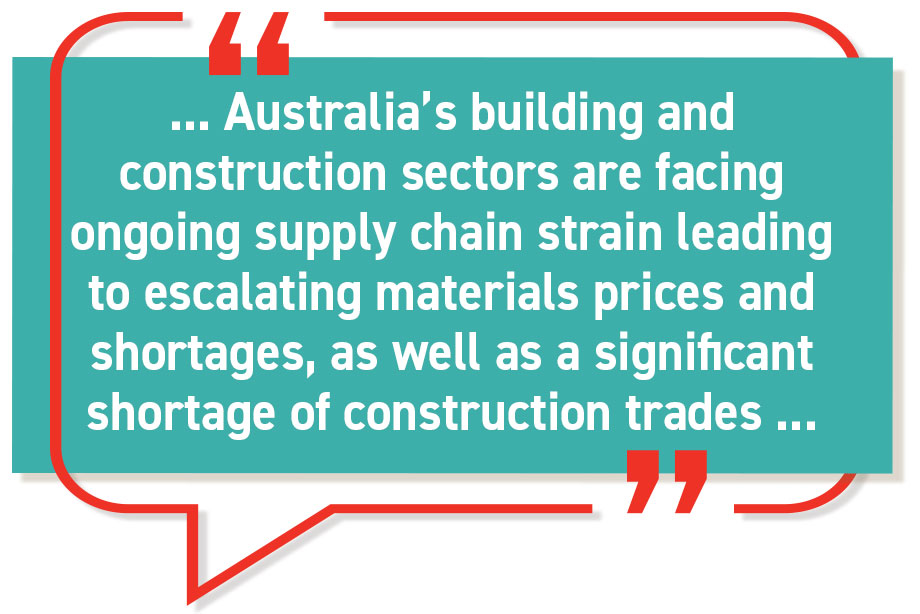Call for Construction Sector Supply Chain Strategy
by Peter Henderson
The Australian Institute of Architects has called on the Australian Government to establish a construction sector supply chain strategy that addresses the shortages and unprecedented price rises impacting the nation’s building and construction sectors.
According to reports, Australia’s building and construction sectors are facing ongoing supply chain strain leading to escalating materials prices and shortages, as well as a significant shortage of construction trades. Labour costs have also increased due to governments’ stimulus measures, the rebuilding of communities in New South Wales and Queensland affected by the floods, as well as the accumulation of outstanding work in Victoria from last July’s storms, repeating flood events in Sydney and bushfires over the past two to three years.
The Institute has written to Treasurer Jim Chalmers and the Minister for Finance Katy Gallagher, calling for the October 2022 Budget to establish a national supply chain strategy for building and construction materials, components and fittings, so that Australia’s building and construction supply chain is less vulnerable to pandemics, disasters or overseas conflicts.
A lot of stimulus funding was allowed in 2020 as the pandemic took hold, so there is no doubt that both sides of politics recognise how important construction is to the Australian economy and for jobs. That immediate crisis has passed, but now a supply chain strategy is required that gives the Australian construction sector much greater resilience both now and into the future.
The previous Morrison-led Coalition Government established the Supply Chain Resilience Initiative (SCRI) and Sovereign Capability Manufacturing Plan (SCMP), but these only addressed a highly select range of critical products such as medicines and agricultural chemicals.
It has also been noted that the Architecture profession is also facing its own pressures with respect to skills shortages over the longer term.
The previous federal government had been approached by the Australian Institute of Architects with a detailed proposal to subsidise architect practices to employ architecture graduates – who need their 3,300 hours of supervised employment as a requirement for undertaking the Architecture Practice Exam in order to attain their registration. However, it was never approved. Due to this, the Institute believes Australia will lose its future architects.
According to sources, the construction supply and labour shortages and associated prices increases and volatility, also have daily impacts for architects, designers and project managers, including:
– Project Delays: this is of particular importance when administering a building contract and extension of time or cost claims clauses may become activated.
– Project Estimates: providing accurate project construction cost estimates when clients do not wish to engage the specialist services of quantity surveyor.
– Needing to source alternative materials: Notwithstanding the original principal’s project requirements brief, materials shortages may also require you to work with the client and/or contractor to seek appropriate compliant materials and products substitutions.
– Business Impacts: Price increases to total construction costs as well as increased time spent in contract administration and sourcing alternatives may have impacts on financial performance of your company.
Source: Australian Institute of Architects



